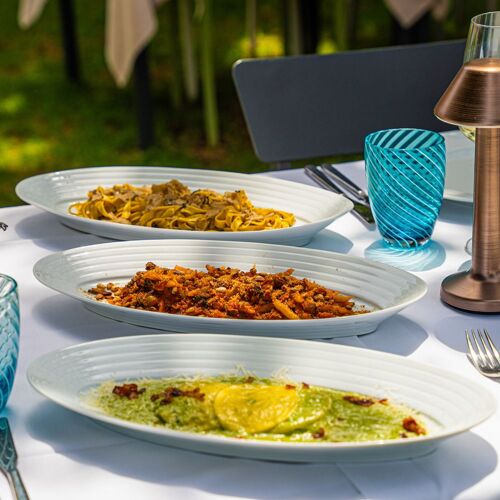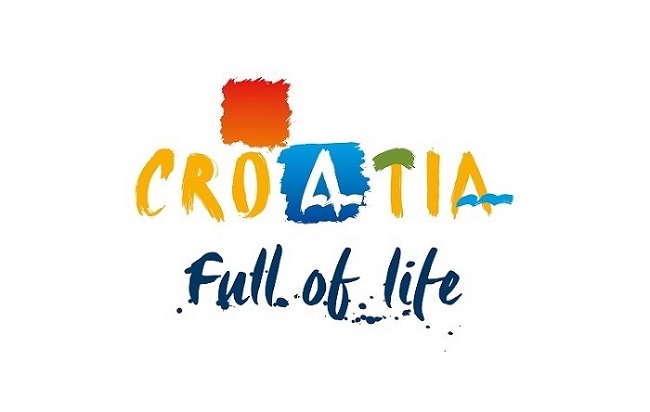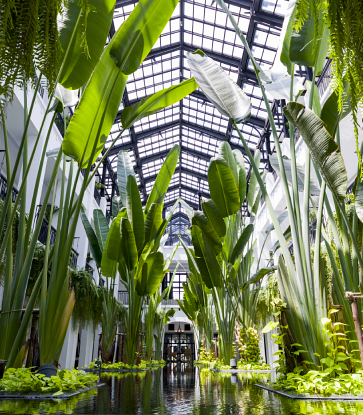Indeed, continental and Mediterranean cuisine come together in Istria: fish, crabs, seafood, maize soup (“maneštra od bobići”), pasta with Istrian truffles, game sauce, goulash, ombolo (loin chops) and sausages, wild asparagus frittata, honey or rue grappa, crostoli, krapfen and fritters are just a few examples of the local variety.
The coast and the backcountry are complementary not only from the point of view of the landscape, but they give life, let’s say, to a unique gastronomic entity where, since ancient times, the flavor of seafood has been enriched with the fruits harvested in the vegetable gardens, orchards, vineyards and woods of the backcountry. The gastronomy features popular and middle-class traditional cuisine, offered by many pubs, inns and taverns (konobe) on the peninsula, but also by high-end restaurants that, year after year, conquer the most demanding palates by capitalizing also on the local produce.

Cheese is definitely one of the exceptional products of this land, so much so that there are Istrian Cheese Routes for popularizing and capitalizing on its production. Made with the milk of goats, ewes and cows that live among the beauty of the local nature and are nourished with quality feed rich in nutritional values. This is the case of the Latus Farm at Gimino, a town in the heart of Istria. An age-old road junction of the peninsula, Gimino is distinguished by some buildings that narrate its history and culture: a Calvary of the early eighteenth century, the town walls dating back to the fifteenth century and the parish church of Saint Michael. And just outside the town there is Latus, a family farm established by the grandfather of the current young owner who roughly twenty years ago converted his dairy farm into a small but important artisanal cheese production.
Herds of Simmental and Brown Swiss breeds produce milk that is processed according to age-old family recipes, when cheese was made for the sustenance of the household. Adapted to modern technologies, they enable making different types of dairy products that can also be enjoyed in the Milk & Cheese Bar on the farm. Cheeses made from cow's milk range from Veli Jože (Istrian hard cheese aged 300 days) to Sir u papru (hard cow's milk cheese aged 150 days covered with pepper), semi-hard Latufino with truffle aged 20 days and homemade Istrian cow's curd.
And then mozzarella and yogurt, also with fruit such as strawberry, apricot, apple and cinnamon or lemon and elderberry. Latus cheeses, which can also be purchased on site, are often the choice of restaurants. This is the case of the chef Annamaria Kolić, of the Alla Beccaccia restaurant in Valbadon on the western coast of Southern Istria. Here, a refined cuisine and seasonal ingredients are the protagonists of a culinary journey through Croatian gastronomy made of local flavors, tradition, family and undisputed hospitality.
The venue is a typical example of an Istrian “konoba” (tavern) with a fireplace dominating the cozy rustic dining room and a menu often comprising different types of game. The restaurant takes its name from its specialty, the woodcock, whose preparation takes a long time and therefore needs to be ordered in advance.


Generally, the menu embodies the essence of Istrian cuisine, putting on display the freshest local ingredients and the traditional recipes inspired by the seasons. The bread and pasta are homemade (Corzetti of pasta with escarole, mushrooms and hazelnuts or Postutice with zucchini, pancetta and Kumparička goat’s cheese) and the main courses include Shank of veal, Wild Boar chasseur or lamb chops.
The starters include hard Istrian cow's milk cheese: “I think that the local cheese has great potential in the kitchen,” explains Annamaria Kolić who has been running this venue since the spring of 2023. “This is why,” she adds, “we have decided to work together with local producers such as Latus at Gimino who have excellent fresh and aged dairy products. We serve one of them warm, as I used to do at home for my children, and it is accompanied with apricots and marinated cucumber, while the yogurt becomes a garnishing cream, with almonds, for our lemon cake”.















